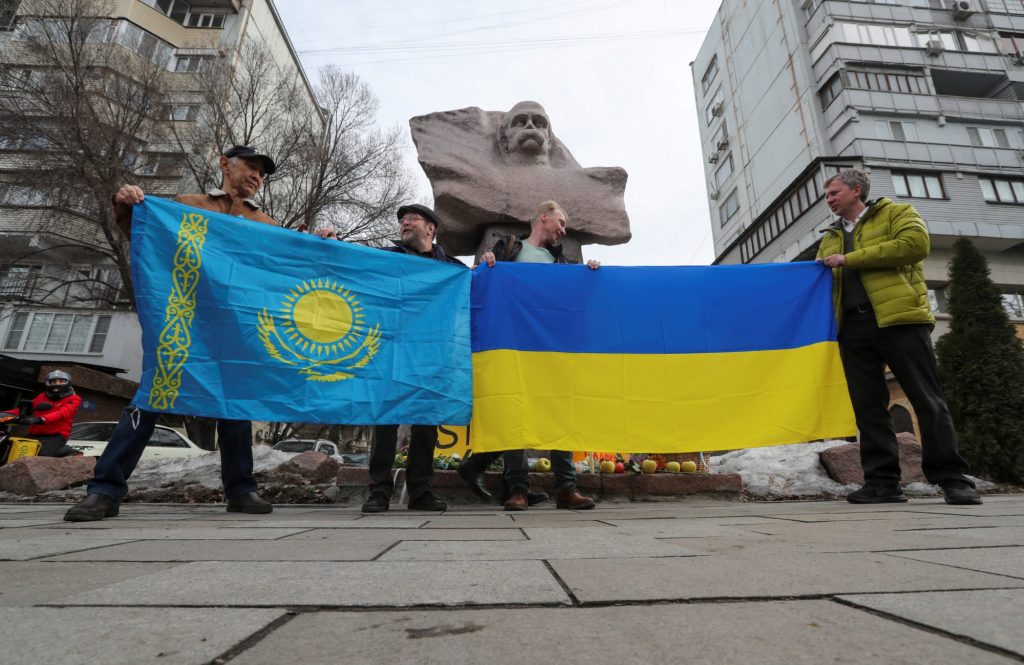America and Russia have had a complex relationship characterized by rivalry for global influence. The relationship between America and Russia has been marked by a long-standing rivalry for global influence.
This has resulted in a complex dynamic between the two nations, with periods of cooperation and strained diplomatic relations. The history of their relationship can be traced back to the Cold War era, when they represented opposing political and economic ideologies.
Despite efforts to improve relations in recent years, tensions persist between the United States and Russia, fueled by conflicting interests and differing approaches to international affairs. This article will delve into the various aspects of this relationship, analyzing its historical context, current challenges, and potential future developments.
Background Of The America And Russia Rivalry
The rivalry between America and Russia can be traced back to historical context of superpower rivalry. The Cold War played a crucial role in shaping the relationship between the two nations. This era of heightened tension between the United States and the Soviet Union had a significant impact on global politics.
Key events further defined the dynamics of the superpower rivalry. From the onset of the Space Race to the Cuban Missile Crisis, these incidents intensified the competition between America and Russia. The space exploration achievements by both countries demonstrated their technological capabilities, while the Cuban Missile Crisis brought them to the brink of nuclear conflict.
Overall, the historical background of the America and Russia rivalry is marked by the complex and multifaceted nature of superpower dynamics, shaped by the Cold War and punctuated by key events.

Credit: ecfr.eu
Economic Powerplay
| America And Russia |
|
Understanding the economic influence of America and Russia is crucial in assessing their superpower status. Both countries exhibit significant economic indicators that contribute to their global power.
"
"
"
Overview Of Economic Influence On Superpower StatusComparing the GDP of America and Russia provides insight into their economic strength. America boasts the largest economy in the world, with a GDP of over $20 trillion, while Russia’s GDP stands at around $1.6 trillion. Such disparities highlight America’s economic dominance. Trade relationships also play a vital role in determining geopolitical power. America’s extensive trade networks allow it to exert influence worldwide, forging strategic alliances and forming economic partnerships. Similarly, Russia utilizes its robust energy resources and international trade agreements to assert its economic influence. Impact Of Trade Relationships On Geopolitical PowerAmerica’s trade relationships significantly contribute to its global power. With strong alliances in Europe, Asia, and beyond, it maintains a network of economic connections that enhance its geopolitical clout. Conversely, Russia’s trade relationships are more focused on energy resources, allowing it to leverage its position as a major exporter to maintain its influence. It is important to recognize the profound impact of economic powerplay when assessing America and Russia’s superpower status. Their economic indicators and trade relationships serve as crucial factors in shaping their global influence. |
Military Dominance And Arms Race
America and Russia have long been engaged in a military dominance and an arms race, constantly striving to surpass each other in terms of military strength and capabilities. The analysis of their respective military capabilities reveals the significant role played by their nuclear arsenals and deterrence strategies. Both countries possess extensive stockpiles of nuclear weapons, acting as a deterrent against potential aggressors. This has created a delicate balance of power, known as mutually assured destruction.
In addition to nuclear capabilities, the space race between America and Russia has also been a crucial aspect of the military dominance competition. Both nations have made significant advancements in space technology, aiming for supremacy in this frontier. Technologies such as satellite-based communications, reconnaissance, and missile defense systems have become integral to their military strategies.
| Aspect | America | Russia |
|---|---|---|
| Nuclear Arsenal | Extensive stockpile | Considerable stockpile |
| Deterrence Strategy | Mutually Assured Destruction | Mutually Assured Destruction |
| Space Technology | Leading advancements | Significant advancements |
The continued military dominance and arms race between America and Russia reflects their desire to maintain a position of power on the global stage. The competition in both nuclear capabilities and space technology has fueled advancements that have implications far beyond military strength, impacting various aspects of society.
Ideological Clash
The ideological clash between America and Russia has been a prominent feature of their relationship throughout history. The examination of their political ideologies reveals the undeniable influence of communism and capitalism. These opposing economic systems fuelled the rivalry between the two superpowers, leading to a series of Cold War propaganda and ideological battles.
Communism is defined by its emphasis on collective ownership and the elimination of social classes. During the Cold War, Russia became the center for the propagation of this ideology, with the Soviet Union actively promoting communism as the superior socioeconomic system. On the other hand, America championed capitalism, advocating for free markets, private ownership, and individual liberties.
The clash between these two ideologies generated intense competition and propaganda campaigns. Both nations sought to establish their respective ideologies as the dominant global force. This ideological battleground led to geopolitical conflicts, proxy wars, and the arms race, all fueled by the underlying ideological differences between America and Russia.
The examination of the political ideologies of America and Russia provides crucial insights into the roots of their multifaceted relationship. By understanding the influence of communism and capitalism, as well as the impact of Cold War propaganda and ideological battles, one can gain a deeper understanding of the dynamics between these two global powers.
Proxy Wars And Global Influence
America and Russia have engaged in numerous proxy wars throughout history, each vying for global influence and dominance. These conflicts have had far-reaching impacts on third-party nations and regions, shaping the geopolitical landscape. An overview of these proxy conflicts reveals the complex dynamics between the two superpowers and their respective allies.
One notable aspect of these conflicts is the immense impact they have had on third-party nations. These nations often find themselves caught in the crossfire, facing political instability, social upheaval, and economic devastation. The proxy wars have resulted in the displacement of millions of people, with long-lasting consequences for their societies.
Examining case studies of notable proxy wars shed light on the strategies employed by America and Russia to exert their global influence. From the Korean War to the Vietnam War, these conflicts have shown the extent to which these superpowers were willing to intervene and support proxy forces to achieve their own geopolitical objectives.
Cyber Warfare And Information Battles
Cyber warfare and information battles between America and Russia are ongoing, with both nations engaging in a fierce competition to gain the upper hand in the digital realm.
America and Russia are engaged in a fierce competition in the realm of cyber warfare and information battles. With the rise of technology, both nations are actively involved in espionage and hacking activities, aiming to gain an upper hand in this digital battlefield. These activities involve infiltrating each other’s networks, stealing sensitive information, and even manipulating systems to achieve political or economic objectives. In addition, disinformation campaigns and the spread of fake news have become prevalent tactics employed by both sides to confuse and mislead the public. These campaigns aim to shape public opinion, sow discord, and undermine the credibility of their adversaries. As cyberspace continues to evolve, the battle for information dominance between America and Russia shows no signs of abating, and both nations are constantly adapting their tactics to gain an advantage in this high-stakes game.Geopolitical Struggles: Eastern Europe And Middle East
Influence in Eastern Europe after the fall of the USSR
The geopolitical struggles between America and Russia intensified in Eastern Europe after the fall of the USSR. One significant event was the Ukraine crisis, which had far-reaching implications in the region. The crisis resulted in a power struggle between the West, primarily led by the United States, and Russia, with each side vying for influence in Ukraine. This struggle played out not only in Ukraine but also in neighboring countries, as both sides sought to expand their sphere of influence. The Ukraine crisis highlighted the complex dynamics between America and Russia, as well as the fragile political situation in Eastern Europe. Moreover, the power struggles between the two global powers extended beyond Eastern Europe and into the Middle East, where they had conflicting interests. These conflicts complicated efforts to resolve ongoing conflicts in the region, further exacerbating the geopolitical struggles between America and Russia.
Diplomatic Relations And Alliances
America and Russia have a complex history of diplomatic relations, with both countries engaging in alliances and partnerships that have shaped global politics. The role of international organizations cannot be underestimated in assessing the dynamics between these two nations. Organizations such as the United Nations, NATO, and the G8 have provided platforms for dialogue and collaboration, although they have also been spaces for conflict and disagreement. The examination of diplomatic relations between America and Russia reveals a constant power struggle and attempts to influence global affairs. Analysis of alliances and partnerships highlights both cooperative efforts and contentious issues, such as the ongoing debate over Crimea and the Ukraine crisis.
Contemporary Challenges And Future Outlook
Current state of the superpower dynamics: The relationship between America and Russia has been a complex one, often characterized by geopolitical tensions. In recent years, both countries have engaged in a number of strategic moves to preserve their interests and assert their dominance on the global stage. From disputes over territorial claims to allegations of hacking and interference in domestic affairs, the current state of their relationship continues to be strained.
Emerging challenges in the 21st century: In the 21st century, America and Russia face a myriad of challenges that test their resilience as superpowers. These challenges include cybersecurity threats, the fight against terrorism, the proliferation of weapons of mass destruction, and the rise of regional powers. As technology advances, the two nations must also contend with the shifting dynamics of power and influence in the digital realm.
Speculations on the future of the America and Russia relationship: It is difficult to predict with certainty the future of the America and Russia relationship. While some speculate that the current tensions will persist and may even escalate, others hold out hope for improved cooperation and diplomacy. Nonetheless, it is clear that both countries will continue to play significant roles in shaping global politics and will likely navigate a complex web of challenges and opportunities in the years to come.
Frequently Asked Questions Of America And Russia
What Is The Current Relationship Between America And Russia?
The current relationship between America and Russia has been strained due to various political and diplomatic issues. Conflicts over Crimea, Syria, and allegations of election interference have contributed to the tensions between the two nations.
How Do America And Russia Differ In Terms Of Political Ideologies?
America and Russia have distinct political ideologies. America is known for its democratic values, while Russia operates under a more centralized government with a president serving as the head of state. These ideological differences shape the way each country governs and makes policy decisions.
What Are Some Of The Key Historical Events That Have Influenced America And Russia’s Relationship?
Several historical events have shaped the relationship between America and Russia. The Cold War, space race, Cuban Missile Crisis, and arms race have had a significant impact on how these two nations perceive each other and interact on the global stage.
Conclusion
As we contemplate the relationship between America and Russia, it becomes evident that their complex history and ongoing geopolitical dynamics continue to shape global affairs. Both countries bear immense influence, with their unique strengths and shared challenges impacting international stability.
Moving forward, engaging in open dialogue and fostering cooperation will be crucial in navigating the evolving landscapes of politics, economics, and security. Together, America and Russia have the potential to forge a path towards a more peaceful and prosperous world.

